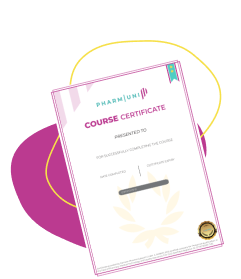Change Control
Definition
Change control is a critical component of pharmaceutical quality systems, ensuring that any planned or unplanned changes to processes, equipment, materials, or documentation are evaluated, documented, and approved before implementation. It is a formal system used to manage modifications that could impact product quality, regulatory compliance, or operational efficiency.
In regulated industries such as pharmaceuticals and life sciences, change control is essential for maintaining Good Manufacturing Practice (GMP) compliance and ensuring that product integrity, safety, and efficacy are not compromised by uncontrolled changes.
Detailed Explanation
Purpose and Importance of Change Control
The primary purpose of change control is to provide a systematic approach to managing changes that may affect the validated state of a process, system, or product. It ensures that changes are:
- Justified based on risk assessment and business needs
- Evaluated for potential impact on product quality, safety, and compliance
- Approved by relevant stakeholders, including Quality Assurance (QA)
- Documented thoroughly for traceability and audit readiness
Without a robust change control system, companies risk introducing errors, inconsistencies, or non-compliance with regulatory requirements, which can lead to product recalls, FDA warning letters, or loss of consumer trust.
Key Elements of an Effective Change Control System
- Initiation: A change request is formally submitted, detailing the rationale, scope, and potential impact of the change.
- Impact Assessment: Cross-functional teams assess the change’s effect on validated systems, regulatory filings, and product quality.
- Approval: Designated approvers, often including QA, must sign off before implementation.
- Implementation: The change is executed in a controlled manner, often with validation or requalification steps.
- Documentation: All steps are recorded, including risk assessments, approvals, and outcomes.
- Review and Closure: Post-implementation review ensures the change achieved the intended result without adverse effects.
Types of Changes Subject to Change Control
Change control applies to a wide variety of modifications, including but not limited to:
- Manufacturing process changes (e.g., equipment upgrades, process optimization)
- Analytical method changes
- Facility and utility modifications
- Material or supplier changes
- Software or computerized system changes (e.g., LIMS, ERP)
- Documentation updates (e.g., SOPs, batch records)
Regulatory Expectations and Compliance
Regulatory agencies such as the FDA, EMA, and ICH require pharmaceutical companies to have a documented change control system as part of their Quality Management System (QMS). Key regulatory guidelines include:
- FDA: 21 CFR Part 211 (Current Good Manufacturing Practice for Finished Pharmaceuticals)
- ICH Q10: Pharmaceutical Quality System
- EU GMP: Chapter 1 – Pharmaceutical Quality System
These guidelines emphasize the importance of quality risk management, traceability, and continuous improvement in managing changes.
Example in Practice
Consider a pharmaceutical manufacturer planning to switch from a manual to an automated filling line. This change would require:
- Evaluation of new equipment qualification
- Revalidation of the filling process
- Updates to SOPs and training materials
- Regulatory notification if the change affects approved product filings
All of these steps would be managed under the company’s change control system to ensure no negative impact on product quality or compliance.



